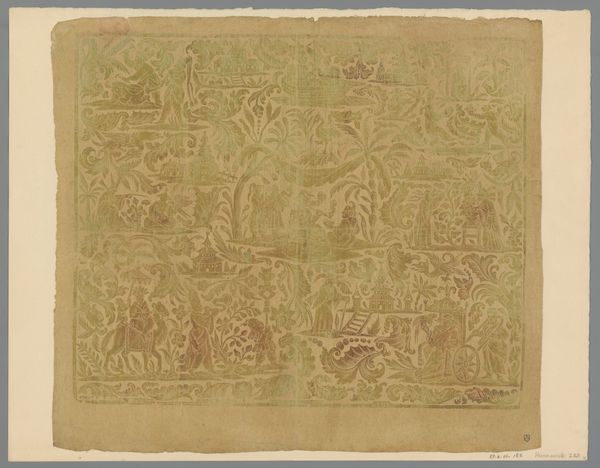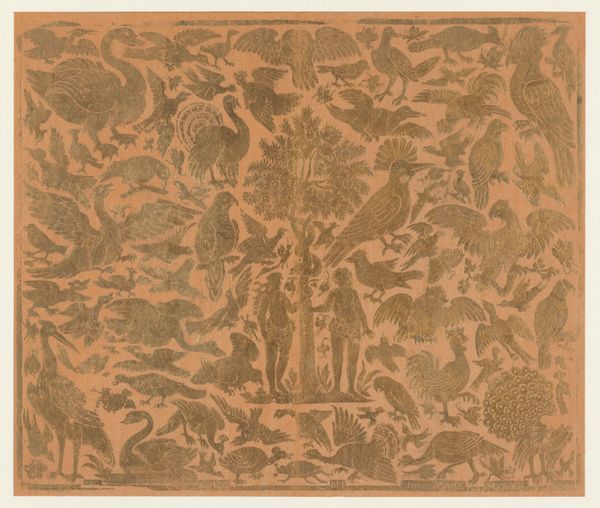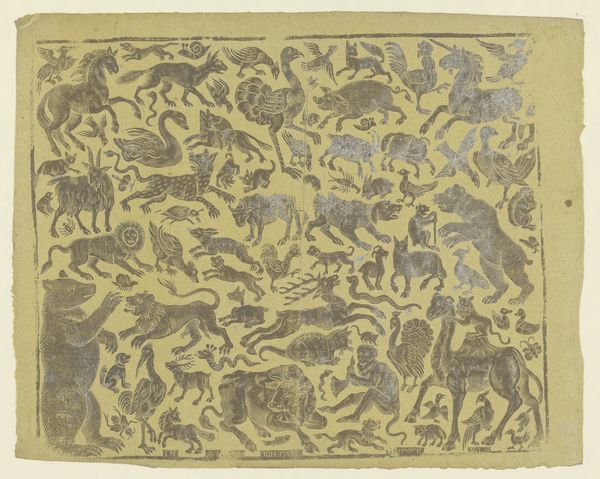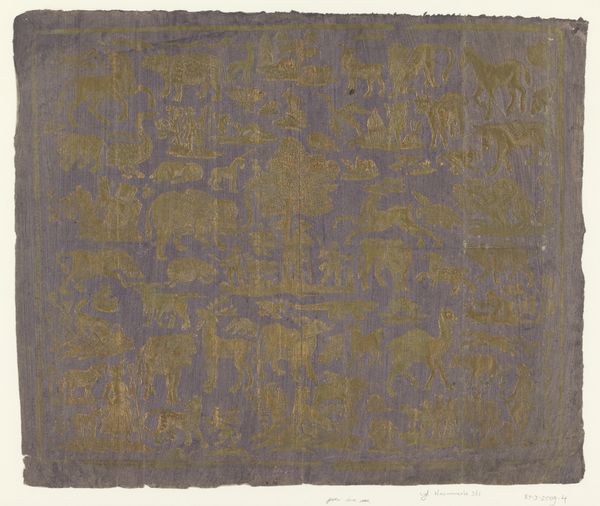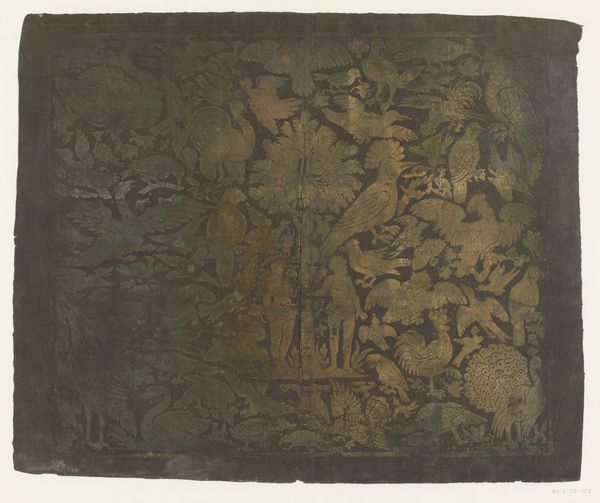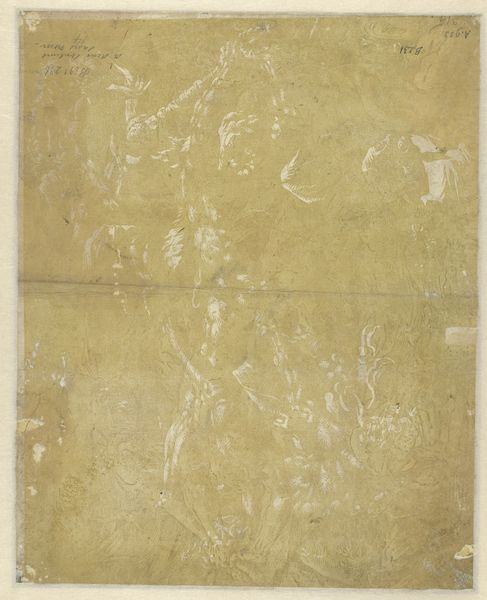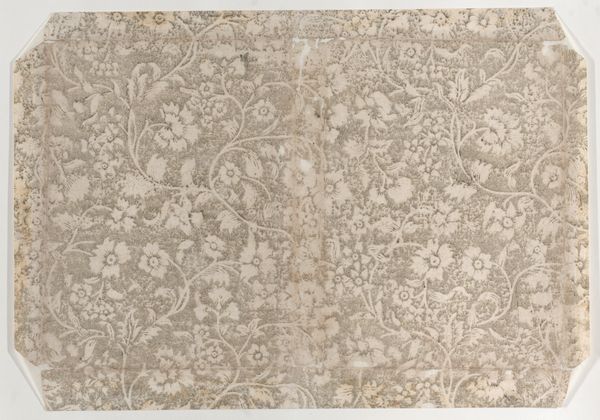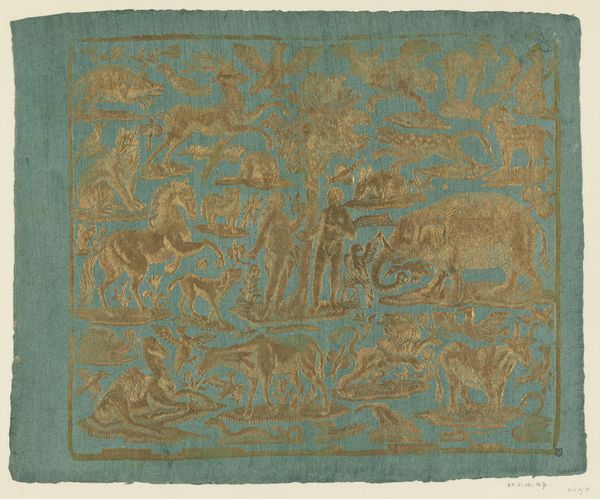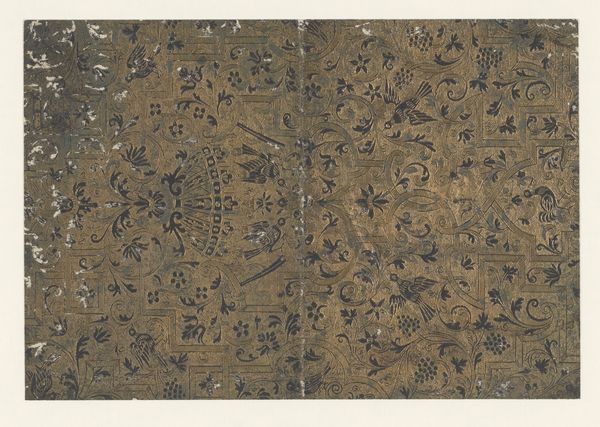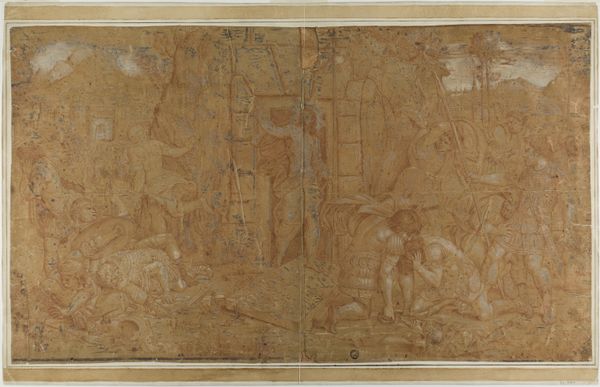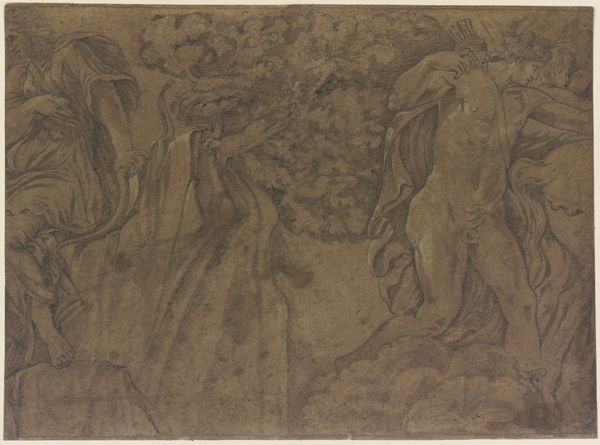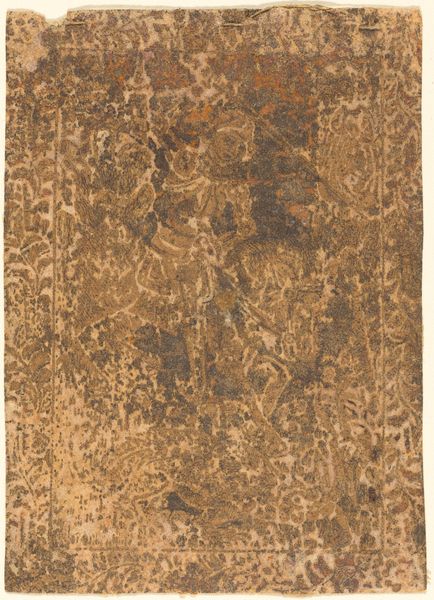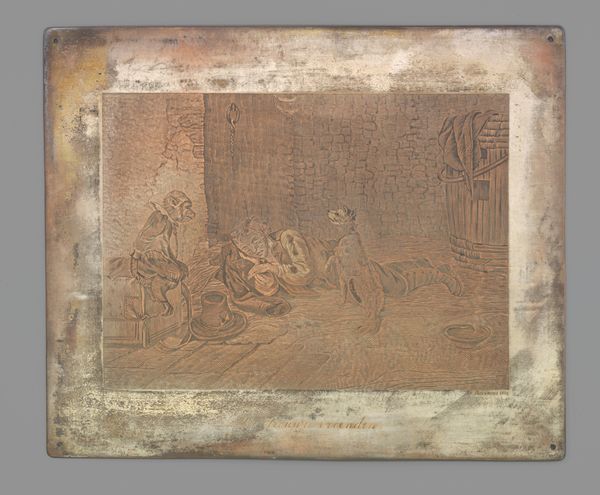
drawing, paper, engraving
#
drawing
#
baroque
#
paper
#
engraving
#
watercolor
Dimensions: height 310 mm, width 380 mm
Copyright: Rijks Museum: Open Domain
Curator: This artwork is entitled "Blad met dieren," or "Sheet with Animals," attributed to Johann Wilhelm Meyer, dating back to between 1740 and 1780. It's an engraving on paper, with touches of watercolor. Editor: My immediate reaction is that it feels like an illuminated manuscript, full of naive yet elegant animal figures, all interwoven. A real cabinet of curiosities in miniature. Curator: Absolutely. These baroque depictions certainly carry the visual language of power and exoticism. It reminds me of a time when nature was viewed as a resource to be cataloged and dominated. What I find striking is how these animals aren't rendered realistically but in an almost heraldic fashion. They symbolize status and perhaps even colonial reach. Editor: The symmetry does give it that regal feeling, and I agree about the status. Notice how the elephant commands the visual center – a clear emblem of both power and the exotic ‘other’ from an European perspective. I’m also seeing a reoccurring use of creatures paired together which can imply some sort of symbolic relationship between them. Curator: And considering the time, the artist likely pulled inspiration from various travel accounts and bestiaries, contributing to a certain distorted representation of these animals removed from their natural habitats. They are effectively made to stand in for concepts related to wealth, dominion, and even perhaps a claim to scientific knowledge. There's a definite political undertone to the way nature is being presented here. Editor: These visual tropes also point towards long held associations and their persistence, such as the lion for courage, the stag for virility, and how that shaped the cultural psyche of Meyer's contemporaries. What impact would these symbolisms and semiotics have when deployed together? Curator: By understanding these animals' symbolic baggage, we can critically analyze the artwork's deeper layers of meaning and the historical context which constructed these meanings in the first place. Meyer isn’t simply depicting animals; he’s upholding social values and geopolitical narratives. Editor: True. The ‘Sheet with Animals’ provides not only an insight into art making in the 18th Century but also the period’s cultural fingerprint and symbolic language that might still echo in today's world. Curator: Indeed. It leaves us to consider how historical power dynamics are woven into the visual fabric that is handed down across centuries.
Comments
No comments
Be the first to comment and join the conversation on the ultimate creative platform.
